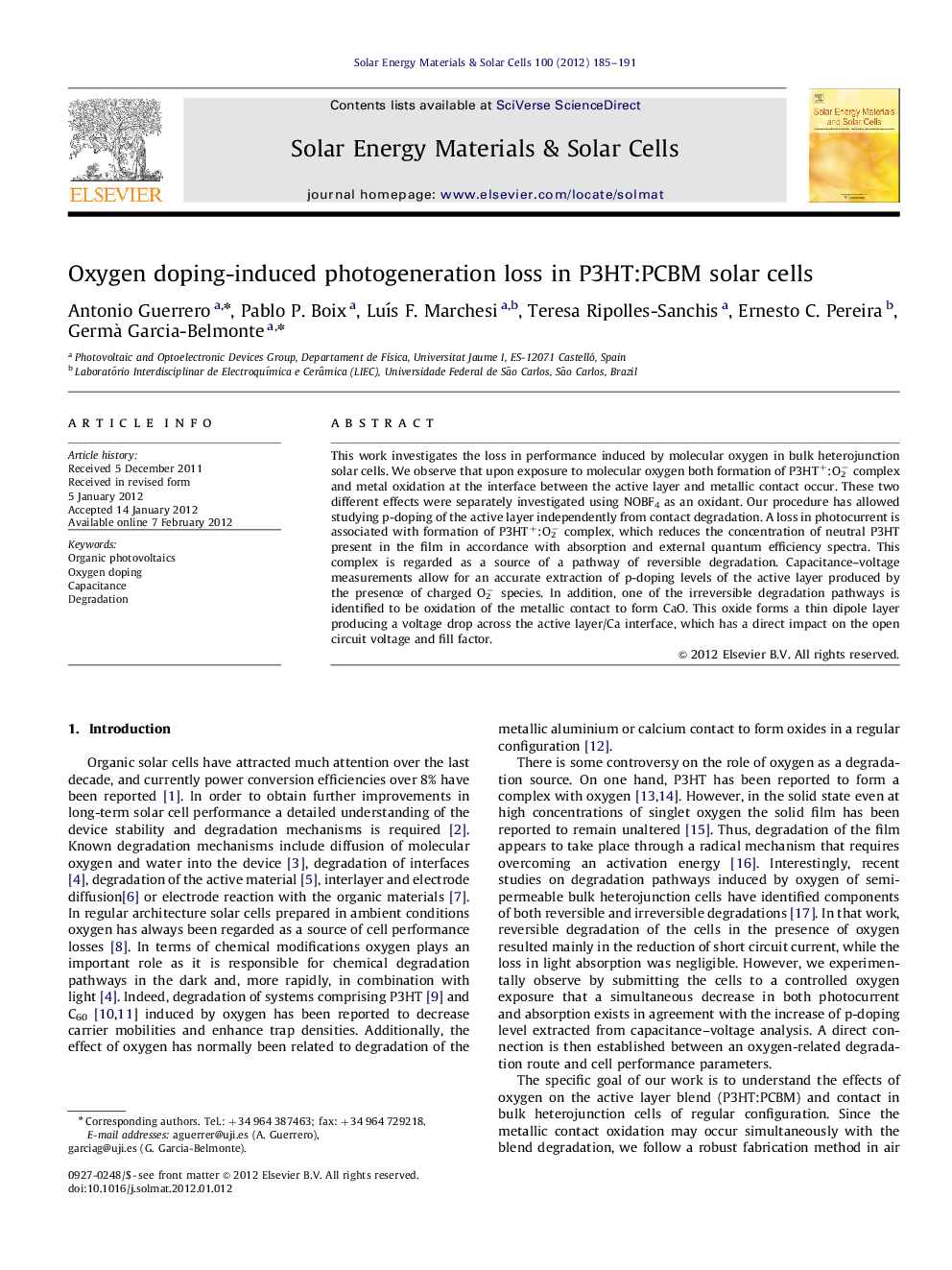| Article ID | Journal | Published Year | Pages | File Type |
|---|---|---|---|---|
| 78391 | Solar Energy Materials and Solar Cells | 2012 | 7 Pages |
This work investigates the loss in performance induced by molecular oxygen in bulk heterojunction solar cells. We observe that upon exposure to molecular oxygen both formation of P3HT+:O2− complex and metal oxidation at the interface between the active layer and metallic contact occur. These two different effects were separately investigated using NOBF4 as an oxidant. Our procedure has allowed studying p-doping of the active layer independently from contact degradation. A loss in photocurrent is associated with formation of P3HT+:O2− complex, which reduces the concentration of neutral P3HT present in the film in accordance with absorption and external quantum efficiency spectra. This complex is regarded as a source of a pathway of reversible degradation. Capacitance–voltage measurements allow for an accurate extraction of p-doping levels of the active layer produced by the presence of charged O2− species. In addition, one of the irreversible degradation pathways is identified to be oxidation of the metallic contact to form CaO. This oxide forms a thin dipole layer producing a voltage drop across the active layer/Ca interface, which has a direct impact on the open circuit voltage and fill factor.
► A connection is established between loss in photocurrent and donor polymer oxidation in P3HT:PCBM solar cells. ► Different oxidant agents (O2 and NOBF4) allow separating bulk from contact degradation effect. ► Oxidation level (p-doping) is monitored using the Mott–Schottky capacitance analysis.
